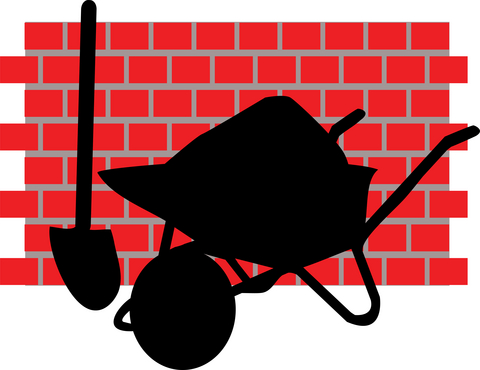No Structure
Have you ever read a story that seemed to jump from one place to another with little or no structure? Or a story in which the characters acted in ways that seemed to be “out of character,” or they acted with no real cause or motivation?
Hopefully, if you ever have read such a story it was (1) not yours and (2) not published!
When such a piece of fiction is produced you may wonder: Where did it all break down? It breaks down primarily due to being ignorant of the structure of scene & sequel. When the basics of scene and sequel are not understood nor used correctly, the story can go down a dozen rabbit trails in a hurry. Hopefully, your main goal in wanting to be a novelist is not to flit from here to there, keeping your reader puzzled, frustrated and dismayed. The goal of every novelist should be to produce a satisfying read. (Translated, that means: a book that cannot be put down!)
Music to the novelist’s ear is when a reader says with great emotion: “I just couldn’t put it down. I was up all night to see how it ended.”
A Look at Scene and Sequel
But I’m getting off the subject. Let’s take a closer look at scene and sequel.
A scene is a unit of conflict that the reader and the character live through together. All of the important stand-out moments in the novel are scenes.
The sequel is the hitch that connects the cart to the horse. Or the horse to the cart, whichever. The sequel becomes the transition between scenes. And oftentimes writers are guilty of getting the cart before the horse. Or worse yet, the hitch is nowhere to be found.
An Example
The purpose of a scene is to create conflict that comes against the character. Conflict is simply another name for opposition. Keep in mind that throughout the novel the character wants something that he or she cannot at this moment have. Each scene is a microcosm of that ongoing pursuit. Each scene should end with an intriguing question for the future, which keeps the reader reading. Let’s create an example:
 Margo is a successful professional executive secure in her position complete with corner office and underground parking spot beneath corporate offices. Recently the boss’s son – fresh from college – is exerting his presence around the office. Today she learns that Junior has been assigned her parking spot. Will she do something stupid by reacting with her emotions? Or will she quietly connive to destroy Junior? Or will she cave in?
Margo is a successful professional executive secure in her position complete with corner office and underground parking spot beneath corporate offices. Recently the boss’s son – fresh from college – is exerting his presence around the office. Today she learns that Junior has been assigned her parking spot. Will she do something stupid by reacting with her emotions? Or will she quietly connive to destroy Junior? Or will she cave in?
This is a scene replete with possibilities for conflict – both internal and external. What does Margo want? Her parking spot, obviously, but more than that – her entire world is being shaken. Her strong foundation has a crack in it. She desperately wants her security back.
Because scenes are (or should be) action-filled, they must be woven together with what are known as sequels. And, because the scene has ended in an unresolved problem, now the main character must move in a new or different direction. The sequel allows the character to translate the problem into a goal. Time can be telescoped, or allowed move quickly (fast forward) within the sequel, hence as the author you can control the tempo or pacing of the story. Let’s return to Margo.
Return to Margo
After Margo receives the official notification that she no longer has her coveted parking spot, she’s walking through the heat of the afternoon to her car two blocks away when Junior comes revving around the corner in his little sports job and waves and smiles at her. How Margo reacts, again both externally and internally, intensifies the conflict. Does she glare? Does she wave back faking a smile? Is she angry? Upset? Disconcerted? Frightened? Unnerved?
The sequel can then set up a goal for Margo. Will she put in her resignation? Start sending out resumes? Gather a coalition of co-workers to head Junior off at the pass? Possibly in this sequel, time can transition from that incident to a company team meeting where Junior publicly embarrasses and belittles Margo in front of her peers. Hence a new scene is born.
However, moving too quickly to the team meeting before the reader knows what is cooking in Margo mind is, as stated earlier, getting the cart before the horse. And of course the reader cannot know until YOU, the author, know. You use the sequel to deftly move from the scene on the street, to the scene in the conference room. The sequel, then, is the aftermath of the conflict presented in the preceding scene.
Margo, never in a million years, ever imagined that her position at the company could be threatened. And now it’s worse than she’s first thought. Public humiliation! Whatever will she do? Move to the sequel and find out.
That, my friend, is called plotting.
Laying Bricks
If you will kindly allow me to mix my metaphors, let’s move from the cart and horse to a brick layer. The brick layer lays the brick, slaps on the mortar, lays another brick, slaps on the mortar and so on till the wall is built. He doesn’t go brick, brick, mortar, mortar, mortar, brick, brick. If he did, the wall would fall.
brick layer. The brick layer lays the brick, slaps on the mortar, lays another brick, slaps on the mortar and so on till the wall is built. He doesn’t go brick, brick, mortar, mortar, mortar, brick, brick. If he did, the wall would fall.
Thus your plot is built scene, sequel, scene, sequel, scene, sequel, scene, sequel, scene – until the novel is completed.
Now you may look through your growing novel and say, “But Norma Jean, I’m already doing that. I recognize scene and sequel all through my work.”
And well you should. But did you understand what you were doing and why? Once you fully comprehend these principles, you can milk them for all they’re worth. And your work will improve by leaps and bounds.
Possibly you’ll author a novel that will keep readers awake all night – because they have to know how it ends!
![]()
Historical fiction at its best! Tulsa Tempest is now available in print version.
You can read Chapter 1 of Tulsa Tempest right HERE!
![]()
I’ve launched a YouTube video series that I call (for obvious reasons!) The Writing Life. These episodes reveal the ins and outs, and the ups and downs of a published author.
Be sure to subscribe so you won’t miss a single episode.
![]()

Tired of the struggle writing your book? Need a helping hand? Norma Jean’s Coaching Services may be the answer you’re looking for. Fill out the questionnaire on the page and let’s see if we’re a right fit. A FREE consultation gets the ball rolling. (Or the pen writing!) Click HERE!
![]()

